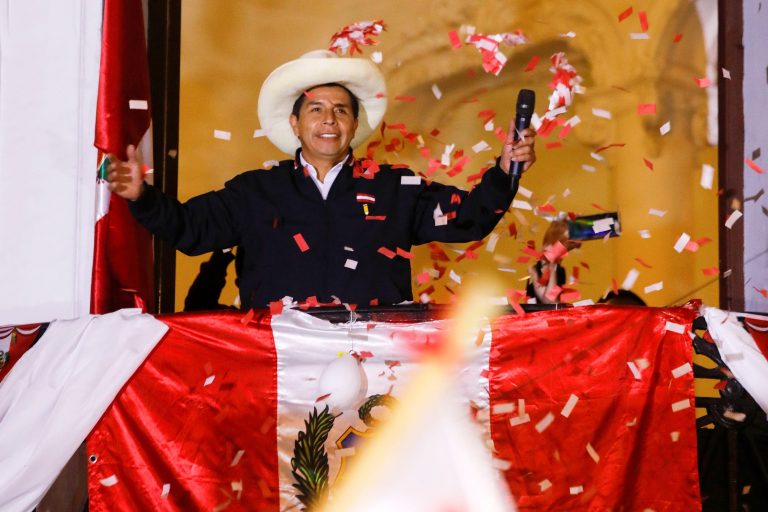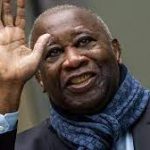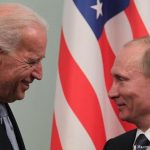Despite leftist rhetoric, Peruvian President elect is likely to choose a centric political course and will not become a new regional Maduro.
More than 18.8 million Peruvians voted in this year’s run-off – the turnout reached nearly 75%. Observers said it could take weeks to deliberate over Ms Fujimori’s legal challenges and formally announce the winner. However, Mr.Castillo, 51, has already claimed his victory. Castillo is an elementary schoolteacher and regional union leader from the northern department of Cajamarca.
Meanwhile, Ms.Fujimori, the third-time president runner, accepted the official election count release, but she said it was important to wait for the results from the pending investigations. Keiko Fujimori is the daughter of former President Alberto Fujimori, who has been imprisoned for 25 years for corruption and human rights abuses charges. Ms Fujimori herself is under investigation on charges of corruption and money laundering; according to her words these claims are politically motivated. Overall, she spent 13 months behind bars between 2018 and 2020. She was released on parole.
Castillo’s victory would boost the region’s political left. The socialist, who hails from a poor area of northern Peru, has galvanized rural voters feeling left behind in the country’s growth story. 88% of residents in the capital’s San Isidro, Peru’s richest neighborhood, voted for Fujimori; 85% of locals of Peru’s poorest Andean region, Huancavelica, supported Castillo.
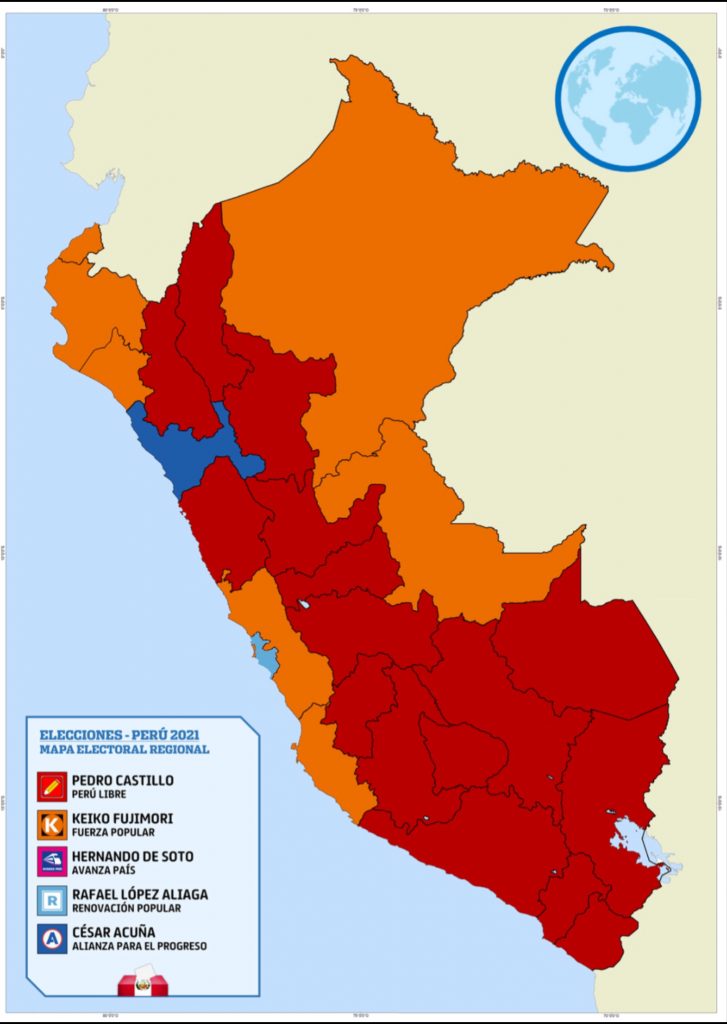
Castillo’s party Perú Libre is Marxist-Leninist. The head of Castillo’s political party is a radical Cuban-trained doctor named Vladimir Cerrón.
Castillo says he will change the Constitution and conduct expropriation policy.
During campaigning, Castillo pledged to sharply hike taxes on mining in the world’s no. 2 copper producer to cover social expenses and amend the constitution to give the government more muscle in running the economy. In addition, he took aim at potential land reforms.
Castillo’s focus on the constitution amendments follows one key goal: economic chapter changes. As it is currently written, the state can only make business after being authorized by specific legislation and for national interest purpose. The next step is to amend this chapter to empower the government, for example, to nationalize the mining and energy sectors, or to change contracts with corporations unilaterally for the latter to pay more taxes.
Castillo’s main promise is based on a key campaign message, ‘No more poor people in a rich country’.
However, despite Castillo’s radical rhetoric during the first round and his affiliation with Perú Libre, he showed that while in office he is ready to tack much closer to the centrist course.
Castillo signaled he might moderate considerably. He backtracked on nationalizing mining by saying he would only raise taxes on the industry. He named Pedro Francke, an experienced former World Bank economist, as a key economic advisor.
Thus, the key question is whether Francke gets an influential position in the Castillo administration or whether Cerrón’s more radical agenda wins out.
According to our estimates, if Castillo chooses a radical policy and relies on Vladimir Cerrón, this could be an indicator of the growth of foreign influence on Peru from Cuba and Venezuela.
However, a fragmented congress is likely to limit radical changes and force Castillo to be pragmatic.
Castillo is unlikely to choose a totally radical way. Aside from what seems to be his growing economic pragmatism, any radical agenda is going to hit a brick wall in Peru’s fractionalized Congress.
If Castillo organizes a new constitution referendum forcefully it could open the door to empowering a broader political project. In particular, executive aggrandizement in Venezuela, Ecuador and Bolivia should be viewed as cautionary tales.
The most likely scenario is that Castillo will face high levels of opposition from a newly elected Congress whose majority will stand against him: Perú Libre won 37 out of 130 seats in the legislative, and there will only be one other leftist party, Juntos por el Perú, that got five seats. The other eight parliamentary caucuses are all center-right or right wing that will make most of his promises pretty difficult to uphold.
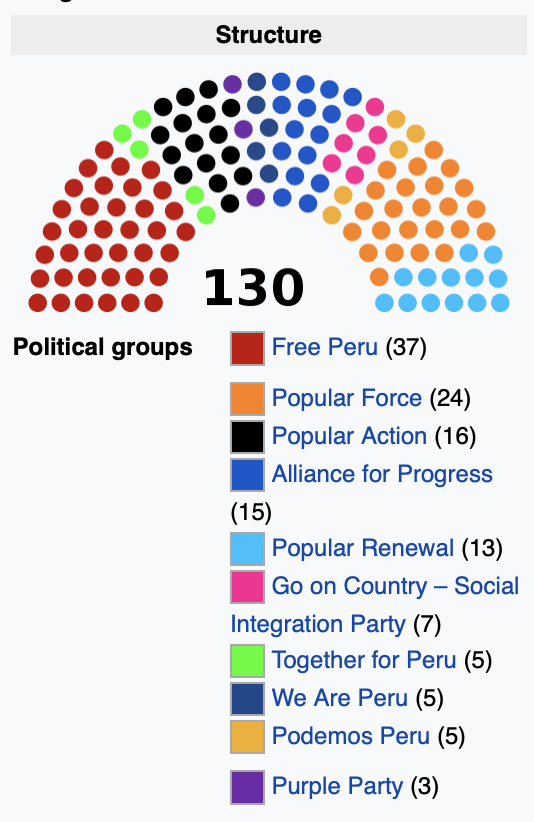
There is no constitution article regulating the implementation of a constitutional assembly, so the first thing the executive would have to do is to submit a law draft to the Congress to launch this mechanism. It would require 87 congressional votes in two consecutive legislatures, numbers Castillo does not immediately have.
We can’t deny that in case of Castillo’s radicalized policy being implemented he faces the threat of presidential impeachment. Ever since Martín Vizcarra was deposed from the presidency in 2020 on “moral incapacity’ reason, president impeachment became a viable option for many Peruvians. So much so that during the campaign, many voters unwilling to support Keiko Fujimori but still being afraid of Castillo’s policy argued that it was better to elect him because he would be easier to remove from office. A line of reasoning that undoubtedly many elected parliamentarians have already have in mind, considering that it only takes 52 votes in Congress to admit a motion to discuss the possibility of impeachment.
However, all these scenarios assume that President Castillo will not dissolve the Congress. If he goes to this step, he will face a confrontation with an aggressive political opposition, an angry business sector, a hostile mainstream media, and, most importantly, a military that has shown no sign of being willing to break with the constitutional order.


